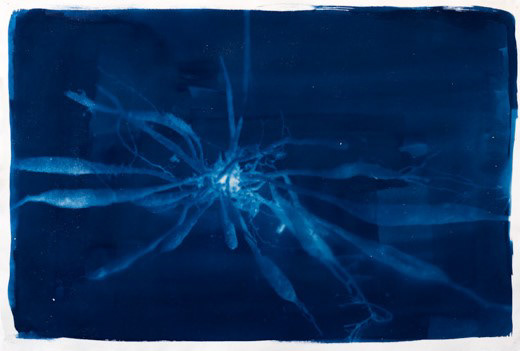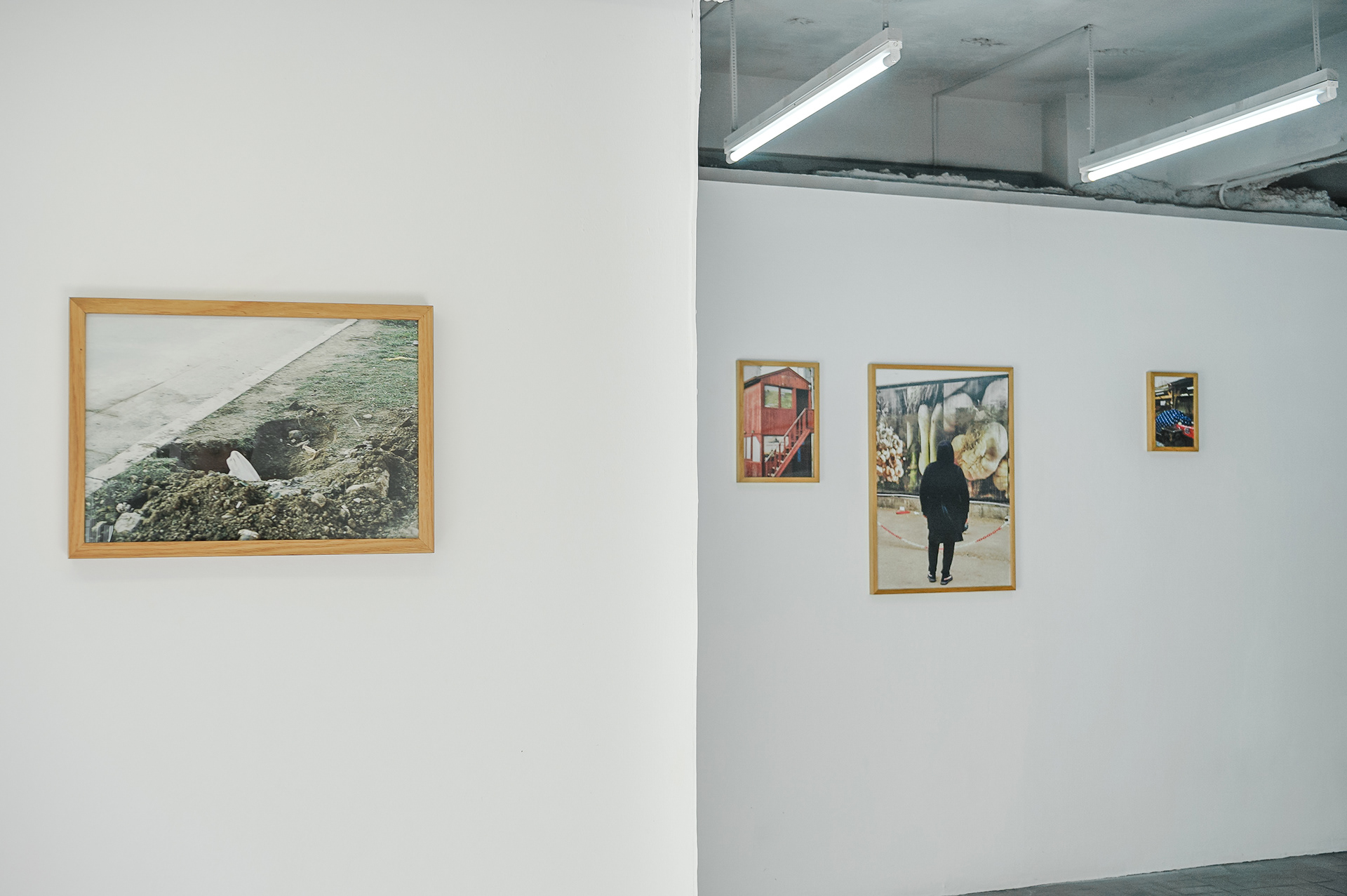This project started to be developed during Fresh A.I.R. Urban Nation Museum Art Residency, Berlin, 2022
Unlike asparagus, the exposure of cyanotypes, also known as iron blue prints, requires direct sunlight. For her work on Romanian asparagus harvesters in Germany, Denise Laura Lobont used this 19th-century photographic technique. Romanian harvesters gained media attention during the first lockdown in Germany in the spring of 2020, bringing their otherwise hidden activity into the spotlight. Images of countless people waiting at the airport were circulated with anxious coverage of what would become of German asparagus this year should the harvesters be denied entry permits due to the pandemic. Lobont approached the asparagus pickers with very different questions. The photographer was interested in what the absence from their Romanian homeland did to the migrant workers and how working life in Germany between March and June affected their private lives and family background in Romania. Lobont was also interested in what was left of the harvest workers in the asparagus region of Beelitz, which is mainly responsible for supplying Berlin with the vegetable, and what is thought about the people when they return home at the end of the season.

Root, cyanotype, 100x70cm

view from Reflecting Migration group show, Berlin 2022

Homeland, cyanotype prints of Facebook posts shared by Romanian migrants mounted on earth

Displacement, cyanotype, 5x5cm

Asparagus field in Beelitz, inkjet print, 30x40cm and 30 seconds, cyanotype, 10x15cm

Hands of Work, cyanotype, 21x30cm

Displacement, cyanotype, 5x5cm

Homeland, cyanotypes and soil, 300x30cm
view from Reflecting Migration group show, Berlin 2022
cyanotype prints and earth installation
In the course of her research,the photographer came across posts by the harvest workers on social media. What was striking here was that, especially during the working season in Germany, many private photographs, such as of family celebrations and children pictures, were uploaded and shared. Lobont created screenshots of these posted images. She printed these screenshots on handmade paper using the blue printing process with the goal of giving the images singularity and returning them to an original media state. The shade of blue also bears similarities to the blue of the EU flag, thus bridging the gap to EU-specific labor migration after Romania's accession. Presented on mounds of earth, the photographs are reminiscent of asparagus fields and also evoke the association of native soil. For a close study, viewers are thus forced to bend down to the height of the beds, similar to the asparagus harvesters. A large-format photo of an asparagus root as well as photos of asparagus blossoms make us aware of the vegetable's cult status in Germany.
Text by Dr. Silke Förschler









view from Fading Lines of Flight group show, CAV Gallery, Bucharest, 2023
Cyanotype prints, photographic prints and earth installation
3 - A3 prints, 1- A1 print